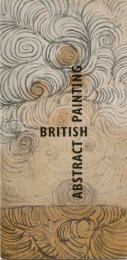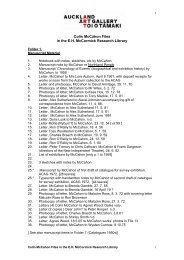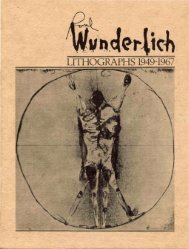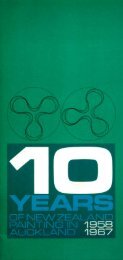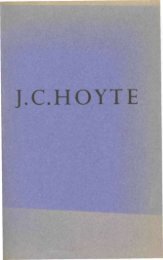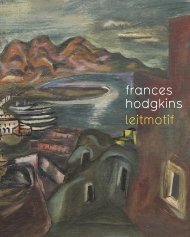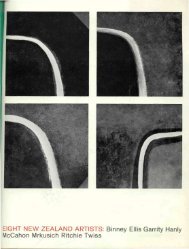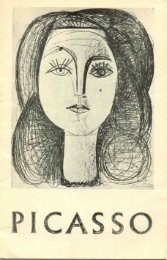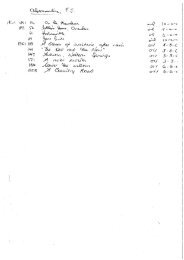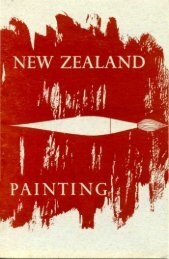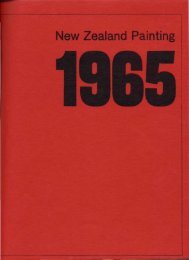You also want an ePaper? Increase the reach of your titles
YUMPU automatically turns print PDFs into web optimized ePapers that Google loves.
Photographssheds, garages, cellars, near heaters or in the kitchen orlaundry. These places have fluctuating climates. A stableclimate is important and 20°C with a relative humidityof 50% is recommended. A lower temperature is preferableif relative humidity can be effectively controlled.Ideally colour film and prints need to be kept at 2°C.Air conditioning which runs constantly can maintainthe desired climate although this is not feasible for mostdomestic environments. A practical alternative is tolocate the photographs in a cool, dry part of the building.Air circulation is also important. The air should befree of gaseous contaminants and dust. Air-conditioningsystems can be designed to eliminate these in areaswhere they are a significant concern.Avoid storing negatives in contact with prints. It issafest to keep them in a separate place to guard againstloss. Be sure to keep collections off the floor.Old cellulose nitrate film, because of its flammabilityand harmful decomposition products, should be stored ina separate place. It may be advisable to duplicate this filmand consider disposal if the film deterioration is advancing.The New Zealand Film Archive has facilities for thestorage and duplication of nitrate motion-picture film.For colour materials, a cheap and effective methodof storage for long-term preservation is low-temperaturestorage in moisture-proof packages. The film is conditionedin a dry atmosphere and sealed in moisture-proofbags which are then refrigerated or frozen.DisplayThe guidelines for the display of photographs are similarto those for artworks on paper (see also page 9).Photographs of high value should be displayed forshort periods only. Older photographs in pristine conditionwill show the most image loss with extended exhibition.Original transparencies should not be projectedand duplicates should be used for this purpose.Valuable prints should be mounted and framed fordisplay (see also page 14). The mount board should beacid-free and should contain a buffer which will maintainan alkaline pH except in the case of cyanotypeprints and colour prints. Mount board in contact withthese should be acid-free but should not contain anyalkaline buffering.Some modern black and white, resin-coated printingpapers are less durable for display purposes thanfibre-based prints. When illuminated, the paper’s titaniumdioxide whitener can produce corrosive compounds.If these are contained within a frame, they cancause minute red spots on the image surface. For longtermdisplay, fibre-based prints are the best choice.The application of any adhesive to the print papershould be avoided if possible although reversible hingesof Japanese tissue are acceptable. Prints may beattached to their backboards with corner pockets madeof a suitable plastic film or acid-free paper. The cornerscan be attached to the backboard with an acid-free linenor paper tape.Photographs on long-term display should be lit byno more than 50 lux. If it is not possible to illuminatethem at this level, display time should be reduced.Colour photographs are particularly susceptible to fadingand should be protected from excessive lighting.Always avoid display near windows or direct sunlight.Framing provides protection from dust, dirt andgases which can damage the image (see also page 13).Framing also provides some protection against climatefluctuations. Frames for photographs should be made ofaluminium in preference to wood. Frame backingsshould not be made of wood, hardboard or acidic cardboard.Acid-free corrugated cardboard and fluted plasticsheeting are preferable materials.Processing New PrintsNew photographs intended for a long life-expectancyshould be processed with care. Photographs must beprocessed in fresh chemicals and given adequate washing.Additional treatments with sulphide, selenium orgold toners assist in protecting the images against chemicalcontamination.27



